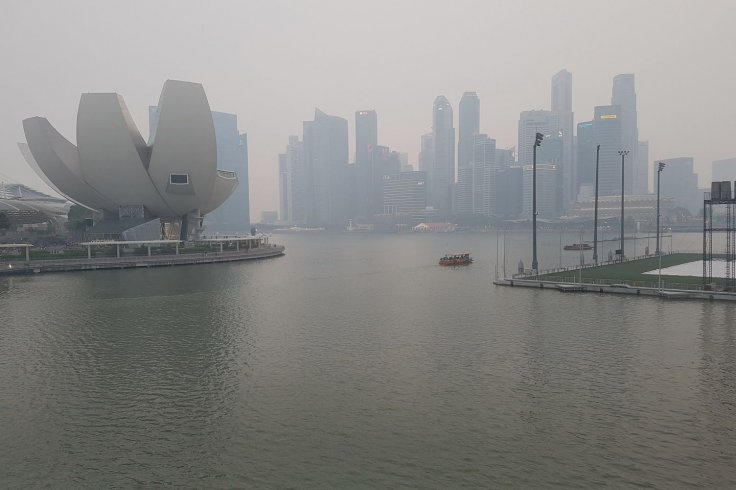
The National Environment Agency (NEA) warned Singaporeans about the unhealthy air quality in the eastern zone of the Republic on Wednesday morning. The agency also confirmed that parts of the country also experienced slightly hazy conditions due to an accumulation of particles in the air.
It should be noted that as per NEA the 24-hour Pollutant Standards Index (PSI) reading ranged from 86 in the west to 102 in the east. It first entered the unhealthy range at around 10 am in the east with a PSI reading of 101 on Wednesday. The agency mentioned in a recent tweet that the 1-hr PM2.5 concentration readings were 39-58 µg/m3, in Band I (Normal) & Band II (Elevated) and the 24-hr PSI was 85-102, in the Moderate & low-end of the unhealthy ranges.
| PSI reading range |
| 0-50: Good air quality |
| 51-100: Moderate air quality |
| 201-300: Very unhealthy air quality |
| Above 300: Hazardous air quality |
Later in Tweeter, NEA said, "1-hour PM2.5 concentration at 12pm is 35-53 microgram per cubic metre," and mentioned that thundery showers are expected over many areas on Wednesday afternoon, which should improve the slightly hazy conditions. However, currently, the agency is monitoring the situation closely and will provide further updates to the members of the public.
| PM2.5 concentration scale |
| 8-55: Normal |
| 56-150: Elevated |
| 151-250: High |
| Above 250: Very high |
It should be mentioned that in September during the Singapore Formula One racing event, the forest fires in Sumatra caused a haze with poor air quality in the Republic. NEA mentioned that the hazy and warm condition in all over the island caused by the smoke haze being blown in by the prevailing winds from Sumatra, where a total of 755 hotspots were detected on September 21.
The air condition was so poor that prior to the F1 race, Singapore Grand Prix authority said disposable masks, which cover the nose and mouth to protect the wearer from breathing in small particles of haze in the air, will be available for sale at merchandise booths if the situation
deteriorates.
Recent reports revealed that India's capital Delhi is struggling through its worst air pollution levels in the last three years. The Delhi government had declared a public health emergency on November 1 and ordered all schools to remain shut till November 5.
When it comes to poor air quality, another name which clicks in our head is the Chinese capital Beijing. But recently it was reported that Beijing has significantly improved the air quality over the last 20 years in a phase-wise manner. Joyce Msuya, Acting Executive Director of the UN Environment said, "This improvement in air quality didn't happen by accident. It was the result of an enormous investment of time, resources and political will. Understanding Beijing's air pollution story is crucial for any nation, district or municipality that wishes to follow a similar path."









